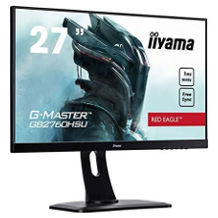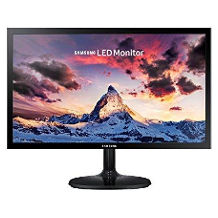4K monitor purchasing advice: how to choose the right product
- The most important things in a nutshell
- 4K monitors offer more options for arranging windows on the desktop due to their high resolution.
- They are suitable for multifunctional use as a TV set, whether for watching TV or streaming.
- Very high resolutions are especially interesting for gamers, but only make sense with a corresponding graphics card.
- The standard size is 27 inches; smaller models are usually not much cheaper.
The cinema for the home
Nowadays, computer monitors are used for a wide variety of applications. The days when users only used them to edit spreadsheets or texts are definitely a thing of the past. Whether it’s for watching TV, streaming, YouTube or playing computer games – a good monitor is an advantage for all of these.
4K monitors offer razor-sharp resolution. This makes not only watching videos fun, but also editing graphics and tables. Another advantage is that you can arrange windows and elements on the desktop more clearly because the larger screen offers more space. In the meantime, 4K monitors are also much more affordable than they were at the time of their market launch. Although you have to reckon with somewhat higher power requirements, many more economical models are already available.
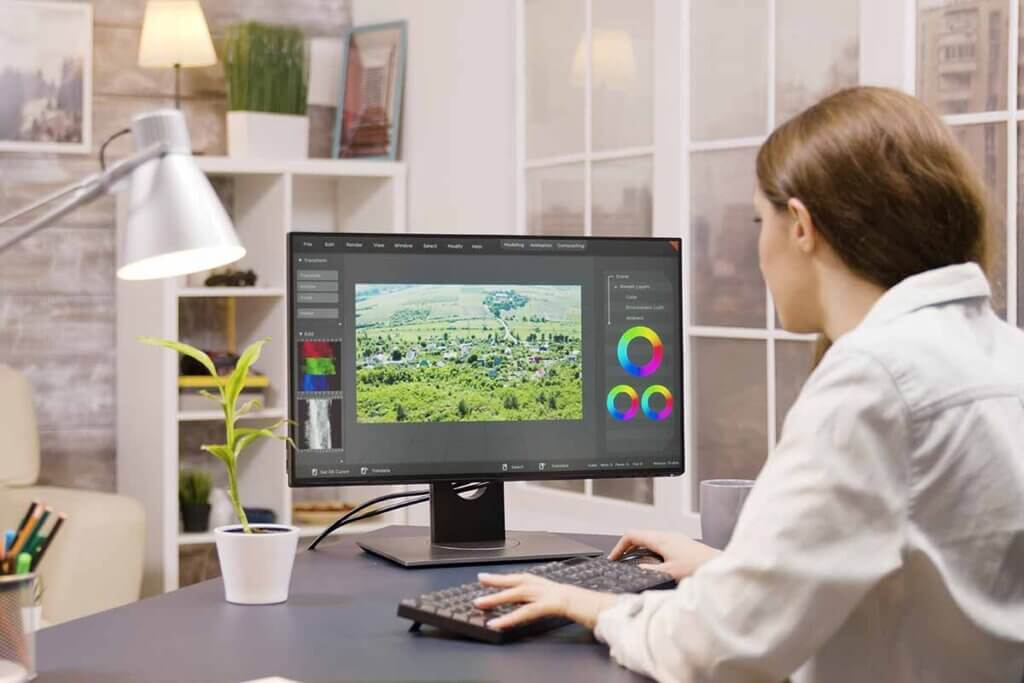
Where does the designation 4K come from?
The term “4K” is derived from the abbreviation “K” for kilo, i.e. thousand. “4K” therefore means that the screen has approximately 4,000 pixels in width. In the case of 4K monitors, this is an approximate value; the actual number is 3,840. “Real” 4K only exists on cinema screens, where this number is 4,096. Although it is not quite numerically correct, the designation “4K” has long since become the standard for televisions and monitors as well.
What are the requirements of a 4K monitor?
Be sure to note the higher space requirement. With a larger screen diagonal, the optimal sitting distance also increases. Therefore, before buying, you should check your workplace to see whether there is enough space for a 4K monitor. It is also important that the graphics card is capable of transmitting the high resolution to the monitor. If the graphics card is not compatible with the 4K monitor, the high resolution is of little use and a jerky picture is the result.
Known brands
LG | Dell | Samsung | BenQ | HP
Technical purchase criteria
When deciding on a suitable high-resolution 4K monitor, a number of technical criteria must first be taken into account.
Panel types
The panel is the most important element for the function of the 4K monitor. There are three different panel types, which differ in terms of the arrangement of the liquid crystals built into them.
IPS panels
These panels work according to the in-plane switching principle. The result is a picture with very good contrast values. Because the molecules are parallel to the display surface, IPS panels achieve high readability even when the viewer is not sitting frontally in front of them. Another advantage is the faster response time of the pixels. Unattractive lagging effects, which can occur with other devices, for example in demanding games, do not occur. Photographers and video editors also appreciate this. However, the backlighting comes with a somewhat higher energy requirement.
Pro points
- Very good contrast values
- Viewing angle stable
- Low response time
Drawbacks
- Slightly higher power consumption
TN panels
In twisted-nematic panels, the pixels consist of rod-shaped liquid crystals. LEDs provide permanent backlighting. The higher the applied voltage, the stronger the perpendicular alignment to the monitor surface. This means less light and a darker colour tone. However, the pixels never become completely black because of the constant backlighting. Due to their simple construction principle, they are inexpensive and correspondingly widespread. Gamers swear by TN panels because they offer a very fast response time. However, an optimal picture is only possible from a vertical viewing angle. Moreover, colour and contrast reproduction cannot keep up with the other panel types.
Pro points
- Inexpensive to purchase
- Very low response time
- High refresh rate
Drawbacks
- Weaknesses in displaying contrasts and dark colours
- Not viewing angle stable
VA panels
VA panels work according to the vertical alignment principle. The liquid crystals move into a horizontal arrangement after the monitor is switched on. In terms of contrast values, VA panels can even outperform IPS panels. However, you have to accept even higher energy consumption for this. They are also considered to be rather sensitive to heat. They are completely unsuitable for touchscreens because the image takes on a darker colour when touched.
Pro points
- Best contrast display
Drawbacks
- Highest energy consumption
- Sensitive to heat
Display technologies
In display technology, a distinction is made between LCD and LED, which differ in the illumination of the liquid crystals.
LCD technology
In the conventional “liquid crystal display” there is a two-dimensional background illumination by means of fluorescent tubes. The individual pixels consist of liquid crystals. Their colour is determined by a filter. A transistor ensures that the crystals are aligned according to the voltage applied and emit a certain colour tone. Because of the fluorescent tubes used, LCD monitors are somewhat larger.
LED technology
LED monitors do not use tubes for irradiation. With these models, the pixels light up themselves. Consequently, the monitors are much flatter. Within each pixel are three light-emitting diodes in red, green and blue. The overall picture is created by mixing these colours. Most modern monitors work with the LED principle. On the one hand, the devices do not need as long to build up the image, and on the other hand, they require less energy. They also have a longer lifespan than conventional LCD monitors.
Resolution
The resolution indicates the number of individual dots that make up the overall picture. The larger this number, the sharper the image is perceived by the viewer. 4K monitors have a resolution of 3,840 x 2,160 pixels, also called Ultra High Definition (UHD). This means that the number of pixels is around four times higher than Full HD with 1,920 x 1,080 pixels. Full HD is also the typical resolution of video material on Blu-Ray discs. So while 4K monitors have a total of around 8 million pixels, Full HD devices have only two million.
What is the difference between UHD and 4K?
The difference between UHD and 4K resolution lies in the number of vertical pixels. UHD refers to a resolution of 3,840 x 2,160 pixels, which is exactly four times the number of pixels of Full HD. As with Full HD, the aspect ratio is 16:9. The term 4K, on the other hand, comes from the cinema sector and strictly speaking describes a resolution of 4,096 x 2,160 pixels. This resolution is also referred to as 4K2K. A further difference is the changed aspect ratio of 17:9. 4K monitors should therefore actually be called UHD monitors. However, it has become common practice to use the terms 4K and UHD synonymously, so that the term 4K now describes a resolution of 3,840 x 1,920 pixels.
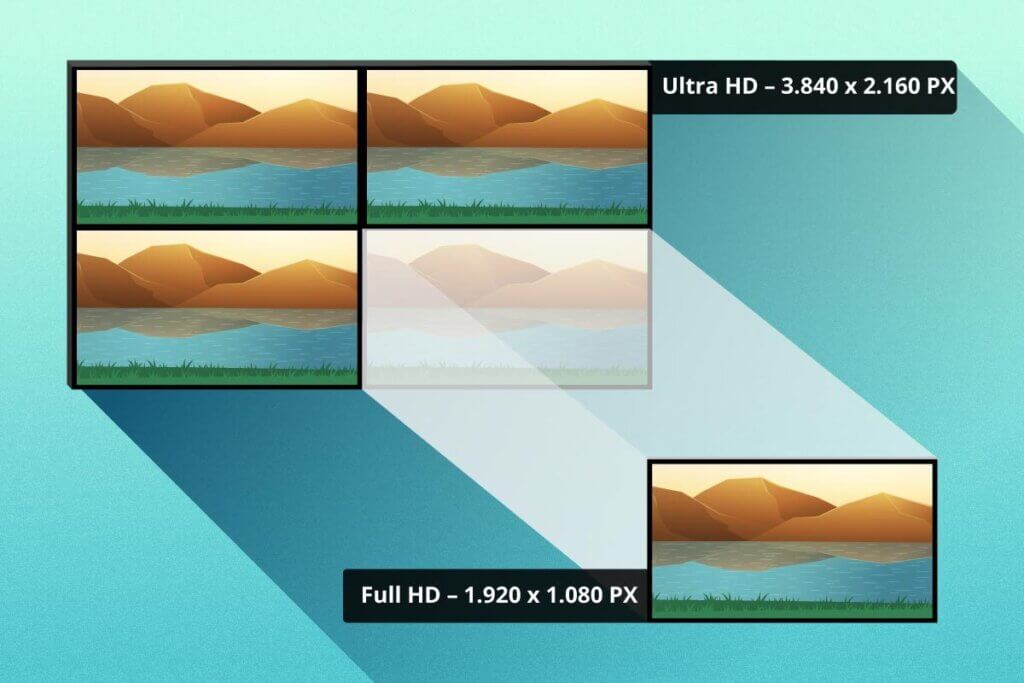
The resolution of the input material does not always correspond to that of the monitor. In other words, a 4K monitor can only show its strengths to the full if the picture material corresponds in quality to the UHD resolution offered. This is not the case with normal television programmes or most programmes on streaming services. However, the popularity of 4K devices is increasing to such an extent that the offer of films and series in 4K format is also growing. Since this resolution is standard for cinema films anyway, the studios have the corresponding technology. It should be noted, however, that the higher the resolution of the video files, the more storage space or data volume they consume.
Frame rate
This value, given in hertz, determines how often per second the monitor can rebuild the picture. This parameter is important for fast action games, sports broadcasts and car chases. On the other hand, those who use the monitor more for office work on the PC do not need very high values. The standard value for television broadcasts is 24 hertz. 4K monitors usually offer a refresh rate of at least 60 hertz. This is absolutely sufficient for most applications.
For gamers, a higher rate of 144 hertz is necessary, especially for fast games. Meanwhile, there are even 4K monitors with a refresh rate of 240 hertz. However, some experts are of the opinion that human perception can no longer perceive differences above 200 hertz. It is important with 4K monitors with a high refresh rate that the graphics card of the PC can also clock that fast. Otherwise, there will inevitably be a jerky picture. For graphics cards, the corresponding figure is “fps” (frames per second).
The specifications of some manufacturers regarding the frame rate are often confusing. Sometimes much higher numbers appear, such as 400 hertz for the Sony technology called Motionflow. This is explained by the fact that the monitor itself calculates further images that lie between those of the 50 hertz reproduction. LG has a similar principle called Picture Mastering Index (PMI). However, these values are not comparable across manufacturers because they are defined differently for each make.
Pixel density
One might assume that resolution is the most important criterion for determining picture quality. But this is not quite correct, because pixel density is at least as important. This is expressed in dpi, i.e. dots per inch. It tells you how many pixels there are on a given area of the monitor. The smaller the monitor with the same resolution, the higher the pixel density. Especially when using a 4K monitor as a computer screen, it is important to know this size; after all, every operating system is optimised for a certain dpi number.

Smartphones of the newer generation almost always have higher dpi values than monitors because the resolution is very high compared to the small dimensions of the display. In this way, manufacturers also take into account the fact that the distance of the eyes to the smartphone is smaller than to a computer monitor.
However, there are also 4K monitors that can keep up with smartphones in this respect. Those who attach importance to this should look for the designation “HiDPI” when buying. The computer manufacturer Apple refers to this as Retina Display. With such a monitor, working on a PC is supposed to be particularly advantageous because the eyes do not tire as quickly.
What is the difference between AMD Free Sync and NVIDIA G-Sync?
AMD and NVIDIA are considered the top dogs among graphics card manufacturers. Both offer a specially developed process for image optimisation with their cards. The aim of both processes is to precisely match the clock speed of the graphics card to the refresh rate of the monitor. Synchronisation errors such as jerky images are thus a thing of the past. With AMD, this procedure is integrated into the software. Therefore, users can usually do without buying a special monitor. To use G-Sync from Nvidia, both a compatible graphics card and a more expensive G-Sync monitor are necessary. The graphics card specifies the refresh rate; the monitor must also support it. The G-Sync system is more expensive overall, but many users describe it as less error-prone.
Response time
The response time of a 4K monitor indicates the amount of time the device needs for the colour change of the crystals. This information is given in milliseconds (ms). Values of 10 milliseconds are sufficient for almost all applications. Only gamers look for faster 4K monitors. Some models can make the switch within one millisecond. It is definitely advantageous if the monitor has an adjustable response time. This way, colour values and brightness do not suffer so much from the fast change.

Connections and interfaces
HDMI is a digital interface for picture and sound transmission. Two such connections should be available at least. Somewhat newer is DisplayPort technology, which ensures an even higher resolution and frame rate. Since it can be assumed that more and more peripheral devices will have a DisplayPort in the future, buying a 4K monitor with this equipment feature is a good decision. The development of picture quality has certainly not reached its end with the 4K or 5K standards.
USB ports are also standard equipment on many 4K monitors. They are suitable for connecting conventional PC peripherals. These include keyboard, mouse and external hard drive or USB stick. They are also an easy way to expand the USB connection field of the PC. The TOSLINK optical digital output is only used for sound transmission. This gives users the option of connecting an external sound bar to improve the sound possibilities.
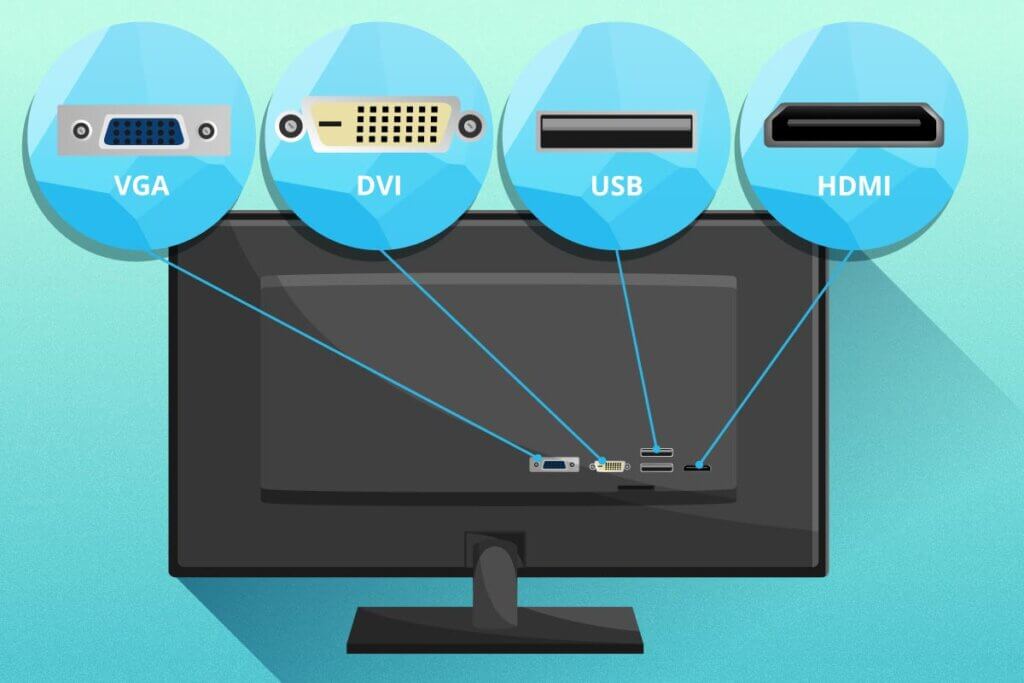
Only occasionally are older connections such as VGA, SCART or DVI still to be found on 4K monitors. However, this feature is interesting for users who own a beamer or VHS video recorder with these connections.
Weight and wall mount
The weight of the 4K monitor is of particular interest if the user prefers wall mounting – for example, to save space on the desk. The VESA standard indicates which mount is compatible with which monitor. The mounts have a specific hole pattern, such as 100 x 100 or 200 x 100 millimetres. While the smaller mounts (called VESA MIS-D) can support monitors weighing up to 14.0 kilograms, the larger ones (VESA MIS-E) can support up to 22.7 kilograms. In addition, there is the VESA MIS-F category up to 113.6 kilograms.
Other factors when buying a 4K monitor
In addition to the diverse, sometimes confusing technical purchase criteria, there are other questions you should ask yourself before buying a monitor, such as curved and anti-reflective displays as well as adjustment options for the benefit of ergonomics.
What are the advantages of curved displays?
Many gamers swear by curved monitors, i.e. displays with a curved surface. They enable greater immersion, which is understood to mean immersion in the game. Such a display can also be an advantage for movies and TV programmes. The contrast is also convincing at the edge of the picture, which is often a disadvantage with other types of construction. However, the advantages of curved displays only come into their own from a central viewing position. They are therefore less suitable for film evenings in a large group. For someone who often sits alone in front of the screen, the purchase is definitely worth considering, but the screen diagonal should be at least 27 inches.
Are reflective or matte displays better for a 4K monitor?
At first glance, reflective displays appear more vivid and colourful. However, there is now a clear recommendation to prefer displays with a matt surface. Glossy display panels often cause unwanted reflections. This is particularly relevant in sunlight and can make viewing the screen much more difficult. It also encourages the viewer to move their head so that the reflections disappear. It is simply not possible to adopt a relaxed posture, whether working on the PC or watching videos. In addition, the overall impression of the image is much more natural with matt displays.
Adjustment options with regard to ergonomics
To ensure that working with a 4K monitor is comfortable and does not strain the body, some considerations regarding ergonomics are advisable before buying. A height-adjustable monitor is easy to adapt to the requirements of different users. A foot that can be tilted forwards or backwards is also beneficial to prevent fatigue or even posture problems. Since some workplaces also involve standing, a monitor that can be adjusted as flexibly as possible is always an advantage. The optimal distance for conventional monitors is 50 to 60 centimetres. For larger 4K monitors with a diagonal of 27 inches, 80 to 100 centimetres are recommended.

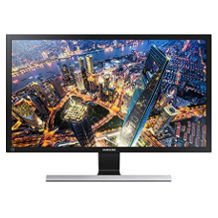
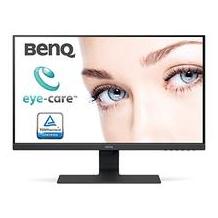
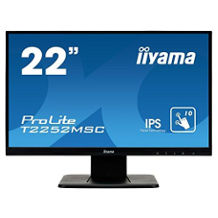
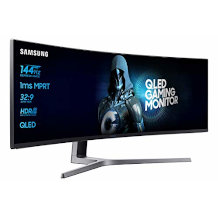
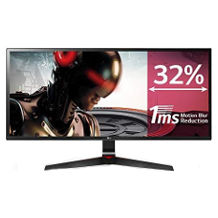


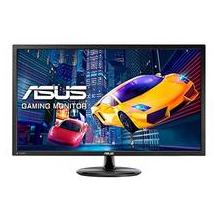

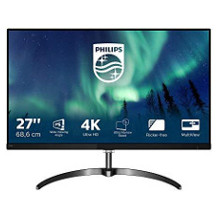
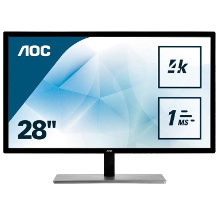
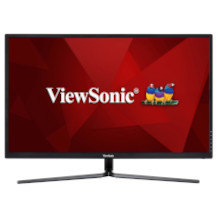
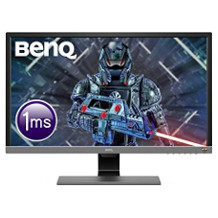
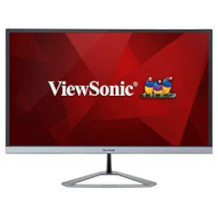
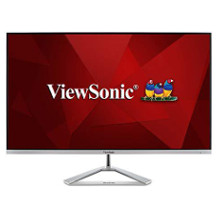
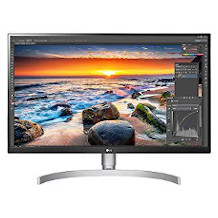
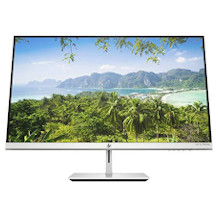
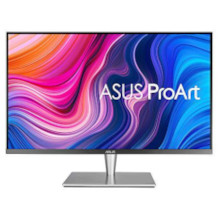
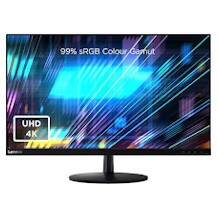
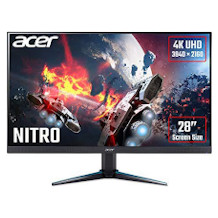
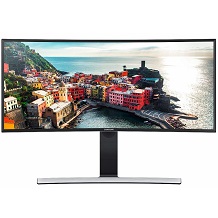

 9,558 reviews
9,558 reviews

